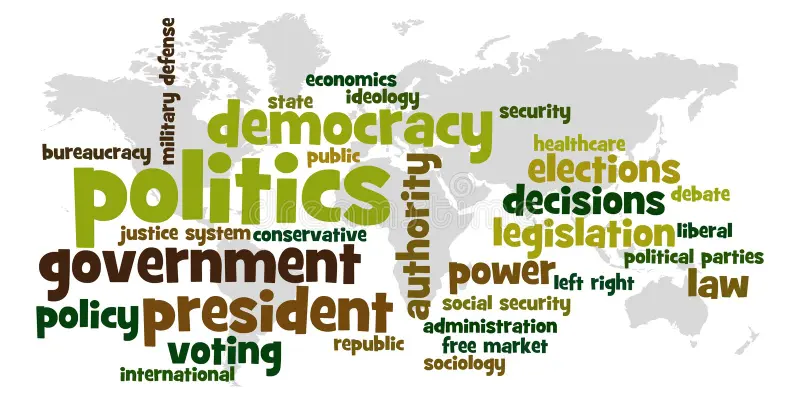Abdul Rehman Niazi
Children are often seen as the future, symbols of hope and progress in a world that is too often defined by uncertainty and turmoil. Their potential, however, is contingent upon the conditions in which they grow, learn, and thrive. Tragically, as highlighted in a recent report by Unicef, the very future we envision for our children is in jeopardy. Despite their potential to inspire hope for a brighter tomorrow, we, as a global community, seem to be failing them. The latest Unicef report, released just before World Children’s Day on November 20, paints a grim picture of what the future might hold for children by 2050. The report, which is intended to raise awareness and improve the welfare of children, identifies three primary threats to their well-being: climate change, demographic shifts, and the growing digital divide. These threats, compounded by the potential for ongoing global conflicts, make the future look increasingly bleak, particularly for the world’s most vulnerable children.
One of the most alarming conclusions drawn from the Unicef report is the devastating impact of climate change. The agency predicts that if current trends in greenhouse gas emissions continue, by 2050, children will face a significantly harsher environment. Heatwaves will be eight times more frequent than they were in the year 2000, extreme flooding will occur three times more often, and wildfires will be nearly twice as common. This is a stark warning about the world our children may inherit, one where the very air they breathe and the land beneath their feet will no longer provide the same safety and stability that we once took for granted.
But it is not just the frequency of extreme weather events that poses a threat to children—it is the disproportionate burden these challenges place on the most vulnerable. The poorest households, particularly in developing countries, are the ones who will suffer the most. When their homes are flooded, or their communities are ravaged by wildfires, children are the first to bear the brunt of these crises. Not only do they face the loss of their homes, but their education is also interrupted. For many, missing school becomes a long-term reality, and some children are even forced to drop out entirely to support their families in the wake of a disaster.
Pakistan’s 2022 floods provide a stark example of this reality. According to a survey by the World Health Organization, the floods left approximately 3.5 million children without access to education. Months after the floods, many of these children had still not been able to return to school, condemning them to a future with fewer opportunities. This highlights a critical issue: when children’s education is interrupted by environmental disasters, their future is irrevocably altered, and they are pushed further into the cycle of poverty. Tragically, this is a reality that could become more common if urgent action is not taken to address climate change. However, the global response to these challenges has often been sluggish, with developing countries, such as Pakistan, pointing out that their emissions contribute only a small percentage to global totals, while simultaneously failing to curb activities that harm the environment.
Beyond the environmental threats, Unicef also highlights the issue of demographic shifts and its implications for children. While the number of children in the world will remain roughly the same, with an estimated 2.3 billion children by 2050, they will constitute a much smaller percentage of the total population. This shift, Unicef warns, could result in children’s voices being further marginalized in societies where the focus is increasingly on aging populations. This demographic trend is already visible today. Despite the significant investment in entertainment for teenagers and young adults, children often lack the spaces they need to grow, develop, and learn. There are fewer initiatives and opportunities specifically tailored to their needs, which limits their potential for personal development and societal contribution. As populations age and resources become scarcer, children may be at risk of being sidelined even further, denied the opportunities they deserve to secure a prosperous future.
In addition to these concerns, the Unicef report also shines a light on the growing digital divide that threatens to leave millions of children without access to the knowledge, resources, and opportunities that the internet provides. While 95 percent of individuals in developed countries have internet access, only 26 percent of people in the least developed countries enjoy the same privilege. The disparity is even more pronounced in rural areas and among children from poor households. Without access to the internet, children in these regions are cut off from educational resources, digital skills training, and job opportunities. In today’s increasingly interconnected world, failing to address these digital divides risks creating an entire generation of children who are left behind, unable to compete in the global economy.
Unicef’s report underscores the importance of addressing these issues urgently. The climate crisis, demographic shifts, and digital inequality are not distant threats; they are realities that will shape the lives of our children in the coming decades. And yet, despite the mounting evidence of these threats, there remains a shocking lack of urgency in addressing them. While the impacts of climate change are already being felt by children in vulnerable regions, governments continue to prioritize short-term political and economic interests over long-term sustainability. The failure to implement meaningful changes to reduce emissions and mitigate environmental damage is a failure to protect the future of our children.
Similarly, the digital divide is often overlooked in the policy-making process. In an age where access to the internet is critical for learning and development, ensuring that all children have access to digital resources should be a priority. Yet, for millions of children in developing nations, the digital divide remains a massive obstacle to their future success. If the world is serious about ensuring that every child has an equal opportunity to succeed, addressing this gap must be a top priority.
In conclusion, Unicef’s report is a powerful reminder that the world is at a crossroads when it comes to the future of our children. Climate change, demographic shifts, and the digital divide are not abstract concepts—they are real threats that will shape the lives of the next generation. It is time for world leaders to act with urgency, not just for the present, but for the future of our children. If we fail to address these issues now, we risk condemning future generations to a future defined by hardship, inequality, and insecurity. The stakes could not be higher, and the time to act is now.

















